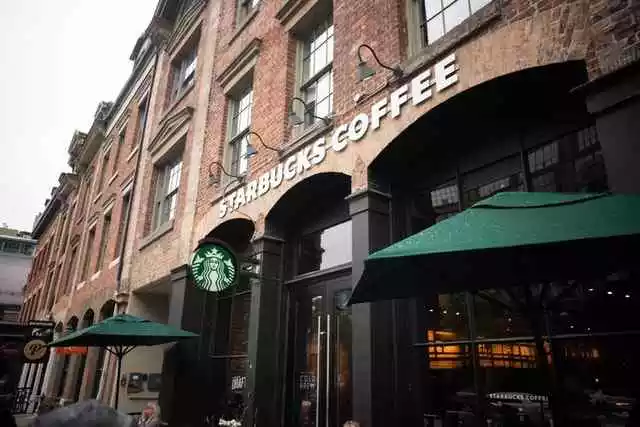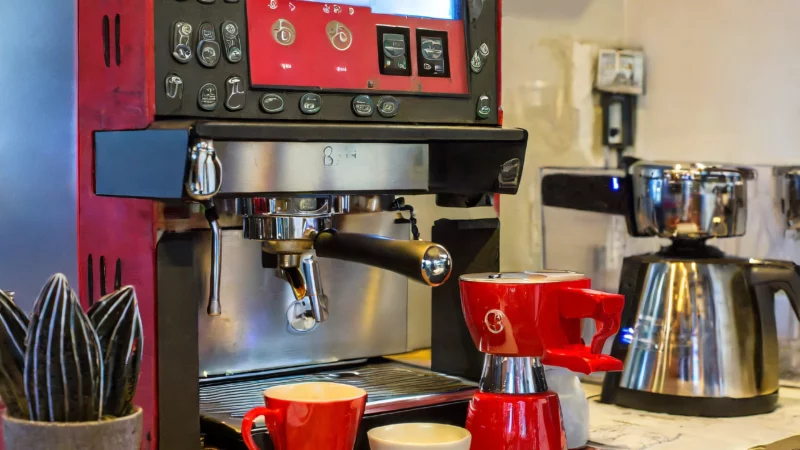Where Do Dunkin Donuts Coffee Beans Come From?

Contents
Are you a coffee lover? Then you surely prefer certain brands of coffee that you use to buy regularly or most often.
No matter whether you like Starbucks, Dunkin Donuts, or any other brands, each one offers a different kind of flavor that makes it catchy and unique.
But figuring out the origin of coffee beans can be a daunting task for which we have prepared this guide to clear your doubt on ‘Where do Dunkin Donuts Coffee Beans come from?’
With this being said, there arises one more misconception, that is, it is only the flavor that makes them different.
Yes, this is a fact but how does that flavor differ from brand to brand! It is because of the various grades of coffee beans that they are using.
But before you become excited to know the grade of coffee beans the brand is using, it is worth noting that the US manufacturers do not include a lot of information regarding the grade of coffee beans you are buying.
A brief overview about Dunkin
The heart of Dunkin’s business is coffee with their heritage being more than 70 years. The coffee lovers visit here time and again to enjoy tasty and a great cup of coffee amidst the fast, friendly, and welcoming environment.
They boast that every cup of coffee they prepare features a consistent taste as they follow strict quality processes for every cup.
Dunkin is always committed to the ‘Tree-to-Cup’ process which implies the process of coffee sourcing beginning in the coffee farm and ending with you sipping the cup of coffee. We will take a tour of this process in detail shortly.
Where Do Dunkin Donuts Coffee Beans Come From?
As claimed by Dunkin, the coffee they made is ‘Premium’ which is also printed on their coffee package. And, as per the classification made by SCAA (Specialty Coffee Association of America), premium coffee implies they need to earn a second grade.
They also claim that they use 100 percent Arabica coffee beans along with their coffee specifications that are already recognized by the industry as a superior coffee grade. These Arabica beans are sourced from Central and South America which are much superior to the Robusta beans.
For the full year, coffee from various other places like Brazil, Colombia, El Salvador, Honduras, Guatemala, Peru, Mexico, and Nicaragua are also used.
They even work with the Rainforest Alliance and World Coffee Research to make sure that the supply of coffee is long-term.
Let us now focus on the ‘Tree-to-Cup’ process employed by Dunkin to get your favorite cup of coffee ready.
The Tree-to-Cup Process of Dunkin
Here, we will provide you with a step-by-step process on how the Dunkin’ coffee process works.
Step 1: Growing
There is a team in Dunkin’ that works with the local coffee farms to grow the highest quality Arabica coffee beans as per their preferences and also ensures that they are consistent always.
Step 2: Picking
Do you know that coffee begins as a berry-like fruit, called the cherry, and the seeds inside the fruit are called coffee beans?
These fruits grow on trees in more than 60 countries across the world. As per statistics, a coffee picker who is experienced can pick up 200 pounds of coffee cherries daily.
Step 3: Processing
As mentioned in the previous step, the seeds of the cherry fruit are coffee beans so the fruits need to process for getting the beans. After that, those green coffee beans need to be cleaned and categorized based on several quality criteria, size, and color.
Step 4: Blending
After the coffee gets certified by Dunkin’ labs, they transport those beans to the roasting facilities in the US where different beans are blended to ensure that a perfect and well-balanced cup of coffee can be prepared.
Step 5: Roasting
This step is the major one where the magic occurs since both the physical and chemical changes to the beans occur at this stage with the color evolving from green to yellow and then brown if roasted in an even manner.
Once they start to turn brown, the sugar caramelization process happens thus revealing the smooth and sweet coffee flavor.
Step 6: Testing of Taste
The finished coffee products are then evaluated by the Coffee Excellence Team of Dunkin to ensure that the flavor and taste are consistent with top-notch quality standards.
Step 7: Brewing
In the restaurants, all the details are orchestrated carefully like the temperature and amount of water, bean grinding consistency, and time along with the length of brewing time.
Their coffee is constantly brewed throughout the day to ensure you are getting a fresh cup of coffee.
Step 8: Serving
This is the last step where they serve their customers with consistent cups of tasty coffee every time because if any kind of issue creeps into the above steps, they will not include that in the cup.
The difference in the taste of coffee of different regions
Let’s talk about Latin American coffees first because that is the major source of Dunkin Donuts coffee beans. These coffees are balanced and popular among coffee lovers for the crispness and flavor of cocoa and nuts that they offer.
Coming to the African coffees, their flavor ranges from berries to exotic spices to citrus fruits with the aroma offering hints of lemon, grapefruit, flowers, and chocolate too.
The Asia-Pacific region coffees feature balanced acidity and complexity with the taste of washed coffees of the Pacific Islands.
Also Read: Gautam Buddha Biography in Odia
What can be the reason for the difference in taste between the Dunkin donuts prepared at home and the one made at the coffee shop?
This is a quite interesting question that you can have in your mind after tasting the coffee at a café and then preparing it at home. As an answer, there can be two major reasons:
The aroma and atmosphere in a coffee shop have an influence on the coffee prepared by them.
The environment of making coffee, donuts, and assembly of people in a café has an impact on the taste of coffee which you will not get at home.
Another reason is maybe because of the difference in the freshness of the coffee beans used at coffee shops and the ones at home.
It’s because when you get those coffee beans they can be a bit older and a little staler.
Let me tell you one more possible reason which can be a reason.
The coffee beans they sell in their cans can be a bit different from the ones they use to prepare the coffee since if you can prepare the same tasty coffee at your home, and then their business will come down.
The Final Words
Hope you have enjoyed this informative guide on the origin of the Dunkin Donuts coffee beans. We also included other information that you must know like the full process employed by them and some other doubts that can arise in your mind.
Thank you for landing here and reading the full guide to get some more insights as a coffee lover! Let’s meet in our next guides or reviews!

